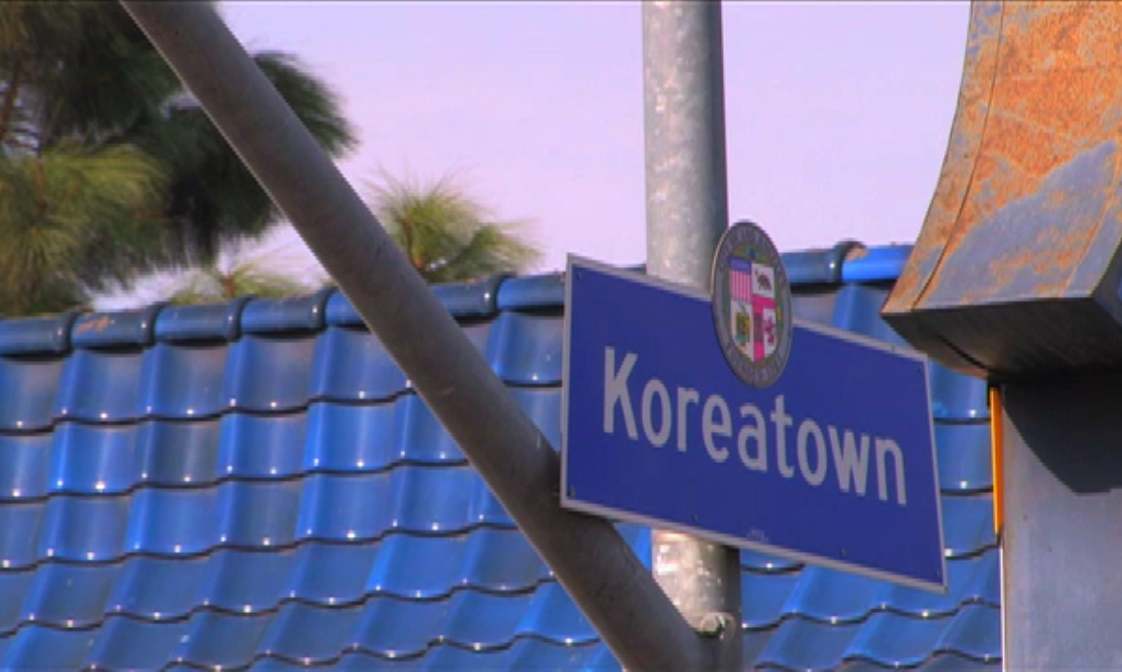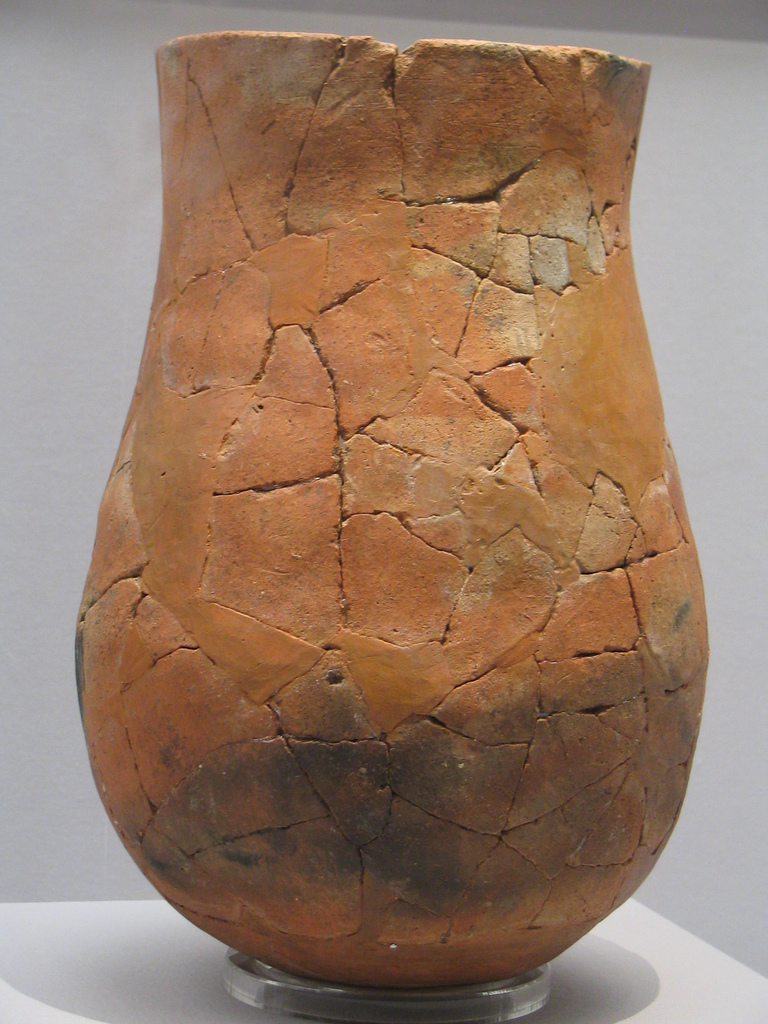|
Koreatowns
A Koreatown (), also known as a Little Korea or Little Seoul, is a Korean-dominated ethnic enclave within a city or metropolitan area outside the Korean Peninsula. History Koreatowns as an East Asian ethnic enclave have only been in existence since the mid-1860s, as Korea had been a territorially stable polity for centuries; according to Jaeeun Kim, "The congruence of territory, polity, and population was taken for granted." Large-scale emigration from Korea was only mainly into the Russian Far East and Northeast China; these emigrants became the ancestors of the two million Koreans in China and several hundred thousand ethnic Koreans in Central Asia. Koreatowns in the western countries such as the United States and Canada have only been in place much later with the Los Angeles Koreatown receiving official recognition in 2008. Also many Koreatowns are not officially sanctioned where the only evidence of such enclaves exist as clusters of Korean stores with Korean signage exist ... [...More Info...] [...Related Items...] OR: [Wikipedia] [Google] [Baidu] |
Ktown 1
A Koreatown (), also known as a Little Korea or Little Seoul, is a Korean-dominated ethnic enclave within a city or metropolitan area outside the Korean Peninsula. History Koreatowns as an East Asian ethnic enclave have only been in existence since the mid-1860s, as Korea had been a territorially stable polity for centuries; according to Jaeeun Kim, "The congruence of territory, polity, and population was taken for granted." Large-scale emigration from Korea was only mainly into the Russian Far East and Northeast China; these emigrants became the ancestors of the two million Koreans in China and several hundred thousand ethnic Koreans in Central Asia. Koreatowns in the western countries such as the United States and Canada have only been in place much later with the Los Angeles Koreatown receiving official recognition in 2008. Also many Koreatowns are not officially sanctioned where the only evidence of such enclaves exist as clusters of Korean stores with Korean signage exi ... [...More Info...] [...Related Items...] OR: [Wikipedia] [Google] [Baidu] |
Koreatown, Philadelphia
The first Philadelphia Koreatown () is located around the Olney section of the city of Philadelphia, United States. Since the late 1980s, the Korean community has expanded northward, and it now straddles the border between North Philadelphia in Philadelphia proper and the northern suburb of Cheltenham, although many Korean-American businesses and organizations and some residents remain in Olney and adjoining neighborhoods. Upper Darby Township, bordering West Philadelphia, also has a large Korean-American population; meanwhile, a rapidly growing Korean population and commercial presence has emerged in suburban Cherry Hill, New Jersey since 2010, centered along Marlton Pike, attracted to the Cherry Hill Public Schools. Signage in Hangul is ubiquitous in some neighborhoods in these areas. History According to ''The Philadelphia Inquirer'', the Koreatown had "moved" from the Logan neighborhood into the Olney section in the early 1980s, attributing the migration from Logan to ... [...More Info...] [...Related Items...] OR: [Wikipedia] [Google] [Baidu] |
Koreatown, Los Angeles
Koreatown (, Latn, ko, Koriataun) is a Neighborhoods of Los Angeles, neighborhood in central Los Angeles, California, centered near Eighth and Irolo streets. Koreans began immigrating in larger numbers in the 1960s and found housing in the Mid-Wilshire, Los Angeles, Mid-Wilshire area. Many opened businesses as they found rent and tolerance toward the growing Korean population. Many of the historic Art Deco buildings with Glazed architectural terra-cotta, terra cotta façades have been preserved because the buildings remained economically viable for the new businesses.Hawthorne, Christopher (November 29, 2014"KOREATOWN'S COOL OLD BUILDINGS POINT TO L.A.'S FUTURE"''Los Angeles Times'' (online). Despite the name evoking a traditional ethnic enclave, the community is complex and has an impact on areas outside the traditional boundaries. While the neighborhood culture was historically oriented to the Korean American , Korean immigrant population, Korean business owners are creatin ... [...More Info...] [...Related Items...] OR: [Wikipedia] [Google] [Baidu] |
Olney, Philadelphia
Olney ( or ) is a neighborhood in the North Philadelphia section of Philadelphia. It is roughly bounded by Roosevelt Boulevard to the south, Tacony Creek to the east, Godfrey Avenue to the north, and the railroad right-of-way west of 7th Street to the west. Although Olney is primarily a quiet residential neighborhood, portions do serve as major commercial centers for many surrounding groups. At 5th Street and Olney Avenue, there is a Korean-American business district, and Hispanic businesses are located in southern Olney. Fisher Park is located in Olney. It is a public park which was laid out and owned by Joseph Wharton, founder of Swarthmore College and the Wharton School at the University of Pennsylvania. It was donated to the City of Philadelphia by Joseph in 1908 as a "Christmas gift" to Philadelphia. Fisher Park has a football field, basketball and tennis courts, and a wooded hiking area. Olney is named after the estate of Alexander Wilson (not the ornithologist), who re ... [...More Info...] [...Related Items...] OR: [Wikipedia] [Google] [Baidu] |
Korean Peninsula
Korea is a peninsular region in East Asia consisting of the Korean Peninsula, Jeju Island, and smaller islands. Since the end of World War II in 1945, it has been politically divided at or near the 38th parallel between North Korea (Democratic People's Republic of Korea; DPRK) and South Korea (Republic of Korea; ROK). Both countries proclaimed independence in 1948, and the two countries fought the Korean War from 1950 to 1953. The region is bordered by China to the north and Russia to the northeast, across the Amnok (Yalu) and Duman (Tumen) rivers, and is separated from Japan to the southeast by the Korea Strait. Known human habitation of the Korean peninsula dates to 40,000 BC. The kingdom of Gojoseon, which according to tradition was founded in 2333 BC, fell to the Han dynasty in 108 BC. It was followed by the Three Kingdoms period, in which Korea was divided into Goguryeo, Baekje, and Silla. In 668 AD, Silla conquered Baekje and Goguryeo with the aid of the Tang dy ... [...More Info...] [...Related Items...] OR: [Wikipedia] [Google] [Baidu] |
Manchuria
Manchuria is a historical region in northeast Asia encompassing the entirety of present-day northeast China and parts of the modern-day Russian Far East south of the Uda (Khabarovsk Krai), Uda River and the Tukuringra-Dzhagdy Ranges. The exact geographical extent varies depending on the definition: in the narrow sense, the area constituted by three Chinese provinces of Heilongjiang, Jilin, and Liaoning as well as the eastern Inner Mongolian prefectures of China, prefectures of Hulunbuir, Hinggan League, Hinggan, Tongliao, and Chifeng; in a broader sense, historical Manchuria includes those regions plus the Amur river basin, parts of which were ceded to the Russian Empire by the Manchu-led Qing dynasty during the Amur Annexation of 1858–1860. The parts of Manchuria ceded to Russia are collectively known as Outer Manchuria or Russian Manchuria, which include present-day Amur Oblast, Primorsky Krai, the Jewish Autonomous Oblast, the southern part of Khabarovsk Krai, and the easter ... [...More Info...] [...Related Items...] OR: [Wikipedia] [Google] [Baidu] |
Prehistoric Korea
Prehistoric Korea is the era of human existence in the Korean Peninsula for which written records do not exist. It nonetheless constitutes the greatest segment of the Korean past and is the major object of study in the disciplines of archaeology, geology, and palaeontology. Geological prehistory Geological prehistory is the most ancient part of Korea's past. The oldest rocks in Korea date to the Precambrian. The Yeoncheon System corresponds to the Precambrian and is distributed around Seoul extending out to Yeoncheon-gun in a northeasterly direction. It is divided into upper and lower parts and is composed of biotite-quartz-feldspar schist, marble, lime-silicate, quartzite, graphite schist, mica-quartz-feldspar schist, mica schist, quartzite, augen gneiss, and garnet-bearing granitic gneiss. The Korean Peninsula had an active geological prehistory through the Mesozoic, when many mountain ranges were formed, and slowly became more stable in the Cenozoic. Major Mesozoic formations i ... [...More Info...] [...Related Items...] OR: [Wikipedia] [Google] [Baidu] |
Cuisine
A cuisine is a style of cooking characterized by distinctive ingredients, List of cooking techniques, techniques and Dish (food), dishes, and usually associated with a specific culture or geographic region. Regional food preparation techniques, customs and ingredients combine to enable dishes unique to a region. Etymology Used in English since the late 18th century, the word cuisine—meaning manner or style of cooking—is borrowed from the French for 'style of cooking' (literally 'kitchen'), as originally derived from Latin ''coquere'', 'to cook'. Influences on cuisine A cuisine is partly determined by ingredients that are available locally or through trade. Regional ingredients are developed and commonly contribute to a regional or national cuisine, such as Japanese rice in Japanese cuisine. Food and drink prohibitions, Religious food laws can also exercise an influence on cuisine, such as Indian cuisine and Hinduism that is mainly lacto-vegetarian (avoiding meat and eggs) ... [...More Info...] [...Related Items...] OR: [Wikipedia] [Google] [Baidu] |
Little Saigon
Little Saigon () is a name given to ethnic enclaves of overseas Vietnamese, expatriate Vietnamese mainly in English-speaking countries. (). Saigon is the former name of the capital of the former South Vietnam (now Ho Chi Minh City), where a large number of first-generation Vietnamese immigrants emigrating to the United States originate from, whereas Hanoi is the current capital of Vietnam. The most well-established and largest Vietnamese-American enclaves, not all of which are called Little Saigon, are in Orange County, California; San Jose, California; and Houston, Texas. Relatively smaller communities also exist, including the comparatively nascent Vietnamese commercial districts in San Francisco, San Diego, Atlanta, Sacramento, California, Sacramento, Philadelphia, Denver, Colorado, Denver, Oklahoma City, Oklahoma, Oklahoma City, New Orleans, Louisiana, New Orleans, the Dallas–Fort Worth metroplex (Haltom City, Texas, Haltom City, Arlington, Texas, Arlington, and Garland, T ... [...More Info...] [...Related Items...] OR: [Wikipedia] [Google] [Baidu] |
Southeast Asia
Southeast Asia is the geographical United Nations geoscheme for Asia#South-eastern Asia, southeastern region of Asia, consisting of the regions that are situated south of China, east of the Indian subcontinent, and northwest of the Mainland Australia, Australian mainland, which is part of Oceania. Southeast Asia is bordered to the north by East Asia, to the west by South Asia and the Bay of Bengal, to the east by Oceania and the Pacific Ocean, and to the south by Australia (continent), Australia and the Indian Ocean. Apart from the British Indian Ocean Territory and two out of Atolls of the Maldives, 26 atolls of the Maldives in South Asia, Maritime Southeast Asia is the only other subregion of Asia that lies partly within the Southern Hemisphere. Mainland Southeast Asia is entirely in the Northern Hemisphere. Timor-Leste and the southern portion of Indonesia are the parts of Southeast Asia that lie south of the equator. The region lies near the intersection of Plate tectonics, ... [...More Info...] [...Related Items...] OR: [Wikipedia] [Google] [Baidu] |
East Asia
East Asia is a geocultural region of Asia. It includes China, Japan, Mongolia, North Korea, South Korea, and Taiwan, plus two special administrative regions of China, Hong Kong and Macau. The economies of Economy of China, China, Economy of Japan, Japan, Economy of South Korea, South Korea, and Economy of Taiwan, Taiwan are among the world's largest and most prosperous. East Asia borders North Asia to the north, Southeast Asia to the south, South Asia to the southwest, and Central Asia to the west. To its east is the Pacific Ocean. East Asia, especially History of China, Chinese civilization, is regarded as one of the earliest Cradle of civilization#China, cradles of civilization. Other ancient civilizations in East Asia that still exist as independent countries in the present day include the History of Japan, Japanese, History of Korea, Korean, and History of Mongolia, Mongolian civilizations. Various other civilizations existed as independent polities in East Asia in the past ... [...More Info...] [...Related Items...] OR: [Wikipedia] [Google] [Baidu] |








